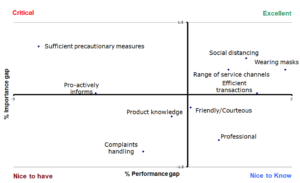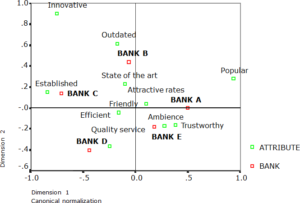Employee Engagement Survey
Description
The principles of the survey are as follows.
- A generic questionnaire with questions and attributes derived from hundreds of such studies, as well as qualitative inputs from employees around the globe.
- The questionnaire contains 39 questions with a total of 72 attributes (statements), which will take your employees around 20 minutes to complete. There are 5 open ended questions.
- You are able to customise the questionnaire to a limited extent.
- Alert your employees that you are running this survey and they can complete the questionnaire online or in paper format.
- Responses from your employees remain completely anonymous.
- Standard analysis and reporting format.
PROCEDURE
![]()
- Select the number of employees that you expect will complete the questionnaire and proceed to greenlight the go-ahead by clicking “Add to Order”.
- You pay 50% of the fee when you order the survey. You can pay with PayPal, one of the leading credit cards or simply confirm the order and make the payment by bank transfer. The transfer details will be in your invoice, which you receive within minutes of placing your order.
- Immediately after placing your order, you will be routed to a short online questionnaire for you to complete. There are questions about the language(s) you wish to run the survey in, the number of staff you have within each department by grade and you can indicate your requirements for customisation in terms of the wording of questions. You can add up to 6 questions of your own.
- This questionnaire also establishes if you prefer to circulate invitations for participation among your employees through an anonymous draw or if it is more practical for you to simply ask employees to register online (they will need a personal email account). Either way, your employees need a code (token) to access the questionnaire to ensure that one employee can only share their views once (to avoid so-called ballot stuffing).
- You will also need to specify a password that the employees will use to access the questionnaire. This is an additional security measure over and above the token, to ensure only employees can answer the questionnaire.
![]()
- We will modify the generic questionnaire for your employees to complete in your selected language(s). The questionnaire is available in any language.
- We send you the link to access the questionnaire – either for online completion or to print a paper version – and, in case you have opted for the anonymous draw, a list of tokens.
- We will provide you a live reporting link so that you can view the number of employees who have completed the questionnaire and scan responses. This to give you a feel about the results as the survey progresses.
- We set the survey up for you within 72 hours.
![]()
- You alert your staff that you are running an employee engagement survey and circulate the link and/or tokens.
- From the online reporting you can assess if the completion rate is too low in certain departments and encourage all staff within them to participate.
![]()
- The survey will remain open for a maximum period of 6 weeks and closes thereafter or earlier on your instructions.
- We will prepare your report within 72 hours (in English only) after closing the survey. We will share a preview of your report (selected questions) before you settle your final payment and you can download the full report after paying the balance of our fee.
- The report will be in PowerPoint with narration.
THE QUESTIONNAIRE
The questionnaire principally draws understanding from three perspectives:
- Rating the level of agreement with positively phrased statements (attributes) on a 10-point Likert scale with 1 meaning “Completely disagree” and 10 “Completely agree”.
- Ranking the importance of the attributes in descending order. Most employee engagement surveys do not include importance, but it is essential information in order to identify critical issues with low satisfaction scores and high levels of importance.
- Open ended questions for more qualitative feedback from you employees.
For a more detailed summary of the questionnaire contents, please click “Questionnaire” tab above.
THE REPORT
The report covers all topics factual manner, untainted by personal opinions. It argues conclusions and recommendations with the evidence the research has revealed. The structure of the report will be as follows:
- Introduction (including cover page, table of contents, objectives, methodology, achieved sample, broad statistical significance levels and timings).
- Executive summary. A concise synopsis of the findings elaborated in detail in the main body of the report including conclusions with recommendations.
- Main body of the report. Chapters in top to bottom sequence, starting from a high-end perspective, drilling down to detail from question to question.
- Appendices, such as data tables, graphs used in compiling the report etc.
- The format will be PowerPoint and – depending on the size of your organisation – consists of 80-95 slides.
Video Demo
You can watch the demo in full screen by clicking this option inside of the viewing frame.
Questionnaire
The questionnaires consists of 39 questions and 72 attributes. It will take an employee 20 minutes to complete.
The structure of the questionnaire is as follows.
Survey Access
- Password.
- Employee indicates if questionnaire is to be completed online or in paper format (instantly downloadable for faxing or emailing scanned questionnaire after completion to the contact details provided).
Profile of Employee
- Which department the employee works in?
- Number of staff in department (security question).
- Position type of the immediate manager.
- Position type of the employee.
- Length of service.
- If employee works in or outside the organisation’s office most of the time.
- Age group.
- Gender.
Daily Work
- The daily duties: ratings and importance ranking of 6 statements.
- Work environment: ratings and importance ranking of 6 statements.
- Quality of life: ratings and importance ranking of 6 statements.
- Open ended question for employees to suggest any improvement in aspects relating to their daily work.
Teamwork and Communication
- Relationship with immediate manager/supervisor: ratings and importance ranking of 6 statements.
- Spirit and effectiveness of teamwork: ratings and importance ranking of 6 statements.
- Effectiveness of internal communication: ratings and importance of ranking of 6 statements.
- Open ended question for employees to suggest any improvement in aspects relating to teamwork and internal communication.
Culture and Organisation
- Relationship with senior and top management: ratings and importance ranking of 6 statements.
- Culture and structure of the organisation: ratings and ranking of 6 statements.
- Open ended question for employees to suggest any improvement in aspects relating to senior management and culture/structure of the organisation.
Recognition, Rewards, Training and Career
- Recognition: ratings and importance ranking of 6 statements.
- Rewards: ratings and importance ranking of 6 statements.
- Training: ratings and importance ranking of 6 statements.
- Career opportunities and guidance: ratings and ranking of 6 statements.
- Open ended question for employees to suggest any improvement in aspects relating to the recognition, rewards, training and career opportunities/guidance.
Overall
- Overall rating of employee satisfaction.
- Overall rating of employee engagement.
- Importance ranking of the 12 employment topics the questionnaire covers.
- Open ended question for employees to suggest any improvements not already mentioned in earlier open ended questions.
Report Analyses
- The report includes various analyses of sets of attributes grouped by topic.
- Analyses are by topic, by groups of topic and consolidated across all topics: overall index.
- Other than department-wise analyses, and subject to the number of employees, they include those by level of seniority in the organisation, length of service, age group and gender.
The report draws on the following analyses tools:
- Cross tabulations presented in tables.
- Bar charts to illustrate percentages.
- Combo charts showing percentages and means.
- Gap analysis visually dividing attributes into four quadrants:
- “Critical”: poorly performing attributes of above average importance.
- “Excellent”: attributes with high performance and of above average importance.
- “Nice to Have”: poorly performing attributes, but with below average importance.
- “Nice to Know:” attributes with high performance, but with below average importance.
- Correspondence analysis: a statistical tool that from the data seeks relationships between – as shown in the example below – attributes and departments. This helps to identify which potentially remedial measures impact multiple attributes and scores of departments.



